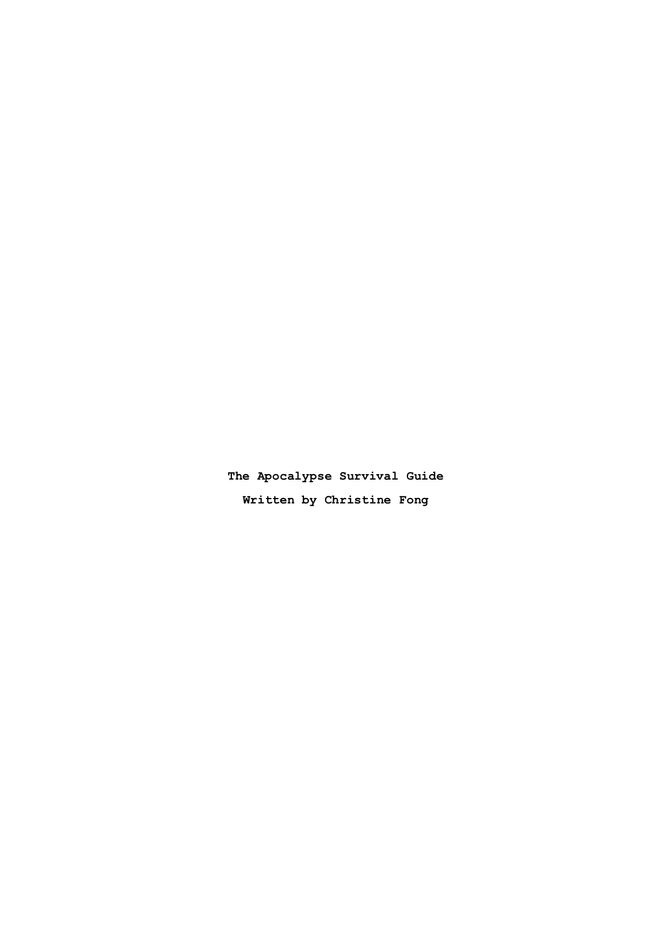01
The Apocalypse Survival Guide
scroll to explore
Overview
I recorded and produced a podcast titled The Apocalypse Survival Guide. I chose this topic because of my fascination with the apocalypse and survival shows like The Walking Dead. I always wondered what it would be like if I was in a zombie apocalypse, so I created this fantasy into an immersive podcast.
Script
I started with an outline for my original podcast idea, which I refined into a script for the podcast episode.
Notes
These are my notes from Max Brook’s book The Zombie Survival Guide, in which he describes an in-depth study of how to survive the living dead. I integrated these concepts into my podcast for a more accurate listener experience.

Editing
After the script was finalized, I used my iPhone to record my voice. Using Audacity, an audio editing software, I edited the audio recordings together with other royalty-free foley sound effects and background ambiences. I received feedback from my class after they listened to the rough cut, and I made improvements to the podcast’s final cut.
next project
02
Media Architecture
Overview
For this project, my teammate and I projected an original video on a building on the University of Waterloo’s campus. We researched our topic of mental health awareness and how it affects students. We specifically chose to present this topic during finals season, because of our intention to send a message to students: During this stressful time, you can get through this and there are people you can contact for support. The location we decided to display our video was on the University of Waterloo's Mike & Ophelia Quantum Nano Centre. This building is near the middle of campus on Ring Road, where students often walk past. We hope there was a positive impact on those, especially students, who walked by and watched our video.
scroll to explore

click unmute icon for sound!
Storyboarding, Filming, & Production
After deciding our topic and location, we created a storyboard for our video which planned out what each scene would look like. We filmed ourselves in front of a green screen (some of the falling papers included), we used Adobe After Effects, which allowed us to remove the green screen background, create a silhouette appearance, and add a falling paper effect. We audio recorded statements from fellow students at the University of Waterloo of thoughts that caused them stress. The video was produced using iMovie, where we combined the audio with the edited video. In class, we showcased our video and used the feedback we received for our final video.
Mapping & Presentation
During the trial run, we mapped out our video onto the Quantum Nano Centre using the Map Map mapping software. Later, on the same building, we presented our projected video to our class and was put on display for everyone in the vicinity.




















